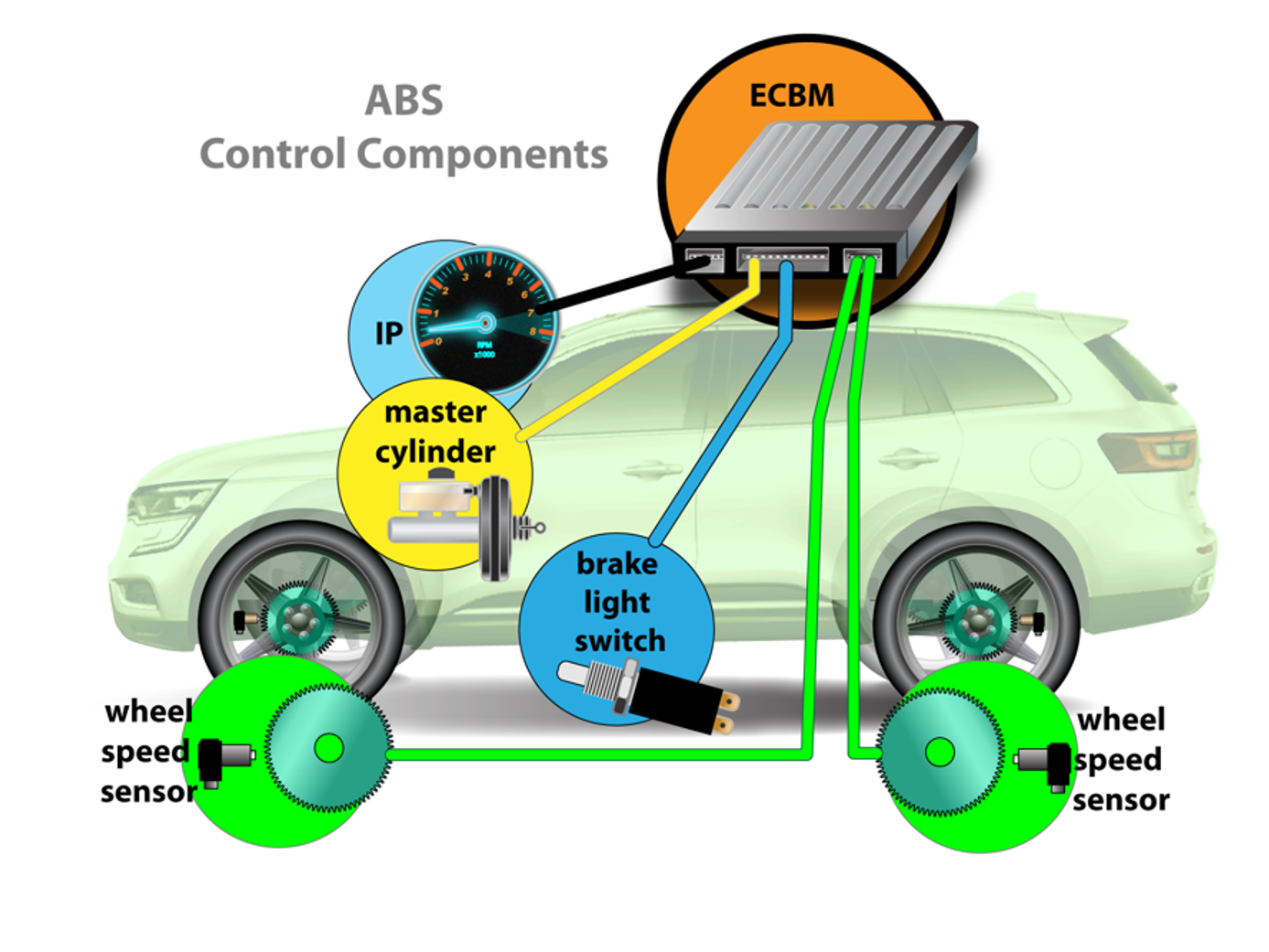In the event of the ABS warning light illuminating on the dashboard or encountering abnormal vibrations or noises while braking, these occurrences may indicate potential ABS sensor malfunctions. Furthermore, inconsistent brake performance or extended stopping distances can be indicative of issues with the ABS sensors.
ABS sensors are an integral component of contemporary vehicle safety systems, significantly contributing to the prevention of wheel lock-up and the preservation of control during braking situations. ABS sensors play a critical role in enhancing vehicle safety by offering improved control and stability. When faced with hard braking or slippery road conditions, ABS sensors aid in preventing wheel lock-ups, enabling the driver to retain steering control and prevent skidding. This innovative technology contributes to decreased stopping distances, thereby rendering emergency braking scenarios safer and more manageable.
For those who have experienced the sensation of their vehicle pulsating underfoot when engaging in hard braking, ABS sensors are responsible for that phenomenon. These unsung heroes ensure that wheels continue to rotate, enabling the vehicle to stay under control. ABS sensors have evolved significantly since their inception, originating in aircraft during the 1920s and eventually transitioning into automobiles in the 1970s, consequently playing a pivotal role in safeguarding both drivers and their tires.
What does ABS mean and what do ABS Sensors do?
ABS sensors, abbreviated as Anti-Lock Braking System sensors, are the unappreciated champions of contemporary vehicle safety. Typically positioned near the wheels, these sensors tirelessly work to prevent wheel lock-ups during abrupt stops. As the brakes are applied, ABS sensors spring into action by measuring the speed of each wheel. Upon detecting any signs of wheel lock-up, they promptly transmit a signal to the ECU, which efficiently adjusts the brake pressure to maintain control.
Affording proper maintenance and care to ABS sensors is imperative for ensuring optimal functionality and durability. Regular examination and cleaning of the sensors aid in preventing debris accumulation or damage that may impede their performance. Avoiding harsh driving conditions that could impose excessive strain on the braking system is advised to extend the lifespan of ABS sensors. Additionally, practicing safe and defensive driving techniques can reduce wear and tear on the sensors. When replacing brake components, it is vital to ensure compatibility with the ABS system to preserve its effectiveness. Remember, even a modest level of care can go a long way in upholding the reliability of your ABS sensors.

Functions of ABS Sensors:
- -Monitoring Wheel Speed: ABS sensors act as the vigilant overseers of your vehicle's wheels, continuously monitoring their speed and relaying this vital information to the ECU. This data enables the ECU to make instantaneous decisions to prevent wheel lock-up.
- -Preventing Wheel Lock-Up: In instances where sudden and forceful braking occurs, ABS sensors intervene to maintain control by averting wheel lock-ups. By regulating brake pressure to each wheel independently, they promote traction and stability, thereby ensuring safety on the road.

Components of ABS Sensors:
- Wheel Speed Sensors: Positioned in proximity to each wheel, these sensors detect the velocity at which the wheels are rotating. They serve as the sensory organs of the ABS system, offering real-time data crucial for monitoring wheel behavior.
- Electronic Control Unit (ECU): As the central command center, the ECU receives data from the wheel speed sensors and promptly decides on the appropriate brake pressure to apply to each wheel. It operates as the composed strategist behind the scenes, facilitating a smooth and secure braking experience.
ABS sensors represent a fundamental technology that elevates the safety and performance of contemporary vehicles. By overseeing wheel speed and averting lock-ups, these sensors play a pivotal role in accident prevention and ensure a seamless driving experience. Regular maintenance and prompt resolution of issues are essential for maintaining optimal vehicle safety.